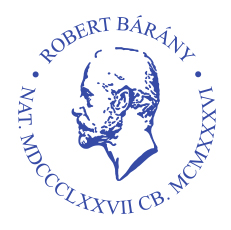Open Access: Yes
Citation
Bisdorff, A., Von Brevern, M., Lempert, T., & Newman-Toker, D. E. (2009). Classification of vestibular symptoms: towards an international classification of vestibular disorders. Journal of vestibular research : equilibrium & orientation, 19(1-2), 1–13. https://doi.org/10.3233/VES-2009-0343
Description
This article describes the consensus-based definitions of vestibular symptoms
Keywords
vestibular symptoms, vertigo, dizziness, vestibulo-visual symptoms, postural symptoms, internal vertigo, spontaneous, triggered, positional, head motion, visually induced, sound induced, valsalva induced, orthostatic, other triggered, external vertigo, oscillopsia, visual lag, visual tilt, movement induced blur, unsteadiness, directional pulsion, balance related near fall, balance related fall, spinning, non-spinning
Reviewer
Raymond van de Berg
Topics
- Spontaneous vertigo
- Positional Vertigo
- Head-Motion Vertigo
- Visually-induced vertigo
- Sound-induced vertigo Tullio’s phenomena
- Valsalva-induced vertigo
- Orthostatic vertigo
- Other triggered vertigo
- Spontaneous dizziness
- Positional dizziness
- Head-Motion dizziness
- Visually-induced dizziness
- Sound-induced dizziness
- Valsalva-induced dizziness
- Orthostatic dizziness
- Other triggered dizziness
- External vertigo
- Oscillopsia
- Visual lag
- Visual tilt
- Movement-induced blur
- Unsteadiness
- Direction-pulsion
- Balance-related near fall
- Balance-related fall
